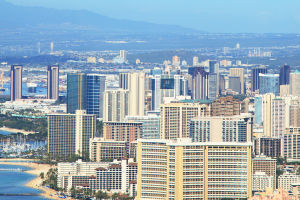No seafarer wants to get hurt or suffer injuries while working on ships. We all know it’s a hostile working environment at the sea and no matter how many precautions are taken, accidents are bound to happen as a result of one main and common reason – human error.
There are some types of life-threatening accidents that keep taking place onboard ships around the world. As seafarers working at sea, it is important that you are aware of them and take extra precautions to avoid them.
1.Electrical shock accidents
Just like on land, electrical shocks have also taken several lives onboard ships. Unattended electrical connections, exposed wires, and failure in taking basic precautions while handling electrical equipment have to lead to many unfortunate incidents.
2.Machinery explosion – generator, compressor, boiler blast etc
Improperly maintained machinery and systems sometimes leads to major blasts/explosions, destroying the ship’s property and killing people working on and around them. Accidents such as compressor blasts, crankcase explosions, boiler blasts etc. have caused serious injuries and even death in many cases in the past.
3.Mooring operations
Yet another most common reason for serious injuries and deaths onboard ships, mooring operations is considered an extremely dangerous task that needs proper skills and knowledge. Several crew members lose their lives every year because of accidents related to mooring operations.
4.Weather hazards
Some of the most dangerous weather-related threats to shipping by sea are hurricanes, squalls, typhoons and tropical cyclones. All of these types of storms can cause serious harm to, or even completely sink, cargo vessels.
While hurricanes, typhoons, and tropical cyclones tend to occur in different parts of the world, they all feature violent wind, torrential rain and surging waves. Hurricane winds can be so powerful that they reach 160 miles per hour. It’s not exactly the kind of situation you want to be transporting cargo in!
Due to these possible problems, we should be more careful and responsible for our safety.
1.Wearing protective clothing
It is imperative to wear comfortable and well-fitted clothes on board a ship as loose clothes can get caught in the machinery and cause injuries. Proper footwear with slip-resistant soles helps in minimizing the risks of slipping and must be worn at all times on the ship.
Apart from these, wearing the appropriate gloves to protect the skin from exposure to heat, chemicals, sharp edges, etc., is a must.
2.Personal protective equipment
Personal protective equipment includes safety helmets, shoes, goggles, ear-muffs, safety harness, life-jackets, life rafts, etc., which is used to safeguard the individual seafarer from any harm.
This equipment is mandatory for ships to ensure that there are no fatalities due to lack of life-saving appliances. The crew also needs to be aware of where the equipment is kept and trained to know how all appliances are to be used.
Dust masks are an additional, essential requirement while working in a toxic atmosphere or during the servicing of the ship. All this equipment needs to be checked at regular intervals to ensure that it is functioning properly and should be replaced if it is not.
3.Use the strongest and most seaworthy ships possible.
Modern container ships are designed to withstand most storms. In fact, materials engineers now use computers to model the stresses on ship hulls. Once they get the information, they create steel able to withstand the measured stresses.
This technique of generating extremely strong reinforced steel, along with using older engineering strategies, such as watertight doors, help to make modern ships very safe. However, they are not completely invulnerable to storms.
4.Thorough inspection of equipment
Thorough inspection of equipment before ships set sail is key.Shipping companies can also use the services of companies that specialize in inspecting, testing and certifying cargo ships to make sure all is well before they set sail. Keep equipment up-to-date.
Just as it’s important to inspect ships before they depart, it’s also critical to keep all equipment up-to-date. If you can see there’s damage somewhere on the hull of the ship, or if any of the machinery on board isn’t working properly, it’s important to get the fixes made before the ship sails, even if it requires a delay in departure.
While it’s obviously best to always be on time, it’s better to delay slightly than to risk your safety to make a deadline.


